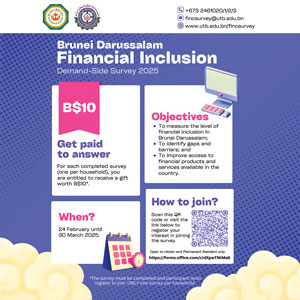Izah Azahari
Women’s lack of representation in digital leadership in policy, media, and research is a critical issue in the ASEAN region. Despite high-level commitments of ASEAN member states to gender digital equality and to lead the region in equal digital access, there are still significant challenges to women’s advancement in digital leadership.
This was the view expressed by Economic Research Institute for ASEAN and East Asia (ERIA) External Consultant on Inclusive Education Rubeena Singh in her Op-Ed titled ‘Women and Leadership in the ASEAN Digital Economy’.
Rubeena noted examples in her Op-Ed to further back up her views, in terms of how the dimensions, causes, and solutions related to digital leadership are not clearly defined, leaving a significant gap in our understanding of how to address this issue.
She went on to cite a recent report titled Women and Leadership in the ASEAN Digital Economy: Mapping the Rhetorical Landscape, authored by Araba Sey and Sara Kingsley which analyses the rhetoric in the region and made several recommendations for women’s advancement in digital leadership.
“Properly defining, understanding, and addressing the cause and symptoms of an issue is essential in making key policy decisions,” wrote Rubeena. “Media institutions can create public support or interest in particular issues, which, in turn, can drive policy action and influence policymaking. They accomplish this through the number, type, and substance of the topics they report on. Media can monitor and report the status of policy implementation.”

She noted this because policymakers frequently prioritise issues that receive significant media coverage. Therefore, a closer examination of the media’s portrayal of women’s issues in the digital economy within the ASEAN region can provide valuable insights into the perceptions of the general public and policymakers regarding this problem.
The findings of the report, added the External Consultant, reveal that media coverage concerning women’s inequality in digital leadership is sporadic and frequently restricted to individual women’s experiences.
This limited coverage fails to offer a holistic understanding of the various issues and challenges that women encounter in the digital economy.
Likewise, there is an insufficiency in policy and research addressing women’s inequality in digital leadership, as they tend to prioritise economic narratives rather than prioritise equal representation as a fundamental principle.
The writer further noted that this ambiguity or blending of issues can have significant implications for correctly identifying and subsequently addressing the core problem. It can also lead to discrepancies between the issue itself and the proposed solutions aimed at resolving it.
For instance, although the ASEAN Sustainable Urbanisation Strategy acknowledges the challenges posed by automation’s impact on women’s employment and gender inequality in science, technology, engineering, and mathematics (STEM) education, it remains uncertain whether prioritising a bootcamp as the preferred course of action would effectively solve the problem. Bootcamp models are primarily designed to provide entry-level skill training and perform tasks that are susceptible to automation.
“The narrow focus on economic benefits detracts from the larger principle of equal representation in digital leadership, which is essential for promoting gender equality and a more inclusive digital economy,” added Rubeena.
The utilisation of data, monitoring, and evaluation plays a crucial role in tackling women’s inequality in digital leadership.
The heavy reliance on global, European, or North American data to define the issue emphasises the pressing need to enhance the collection of gender-disaggregated data within the ASEAN economy.
Currently, even basic data regarding the extent and nature of women’s participation in the digital economy are scarce, with most economic gender data primarily focussing on women in the textile, clothing, and footwear industry.
This data gap poses significant challenges in understanding the specific obstacles faced by women, thereby impeding the development of effective solutions to address these challenges. Without the establishment of routine data collection and monitoring systems, evaluating the effectiveness of policies and strategies will become an insurmountable task.
Further citing Sey and Kingsley, the external consultant went on to write that the authors provide a recommendation for policymakers to proactively incorporate monitoring and evaluation mechanisms into policies aimed at improving the status of women in digital leadership.
This includes utilising independent research and media coverage as tools to consistently raise public awareness about the issue. The implementation of systematic and longitudinal data collection is crucial for effectively monitoring and managing the anticipated and unforeseen outcomes of policy initiatives.
Furthermore, this approach will aid in identifying whether gender equality in digital leadership within the ASEAN region is primarily a policy, implementation, or management challenge, thereby guiding the appropriate allocation of resources.
“We need to shift the focus from economic narratives to a more comprehensive understanding of the issue and its causes. By improving the collection of gender-disaggregated data, we can gain a better understanding of the challenges faced by women in the digital economy and develop effective solutions to address them. Only by doing this can we achieve equal representation and a more inclusive digital economy for all,” said Rubeena.




